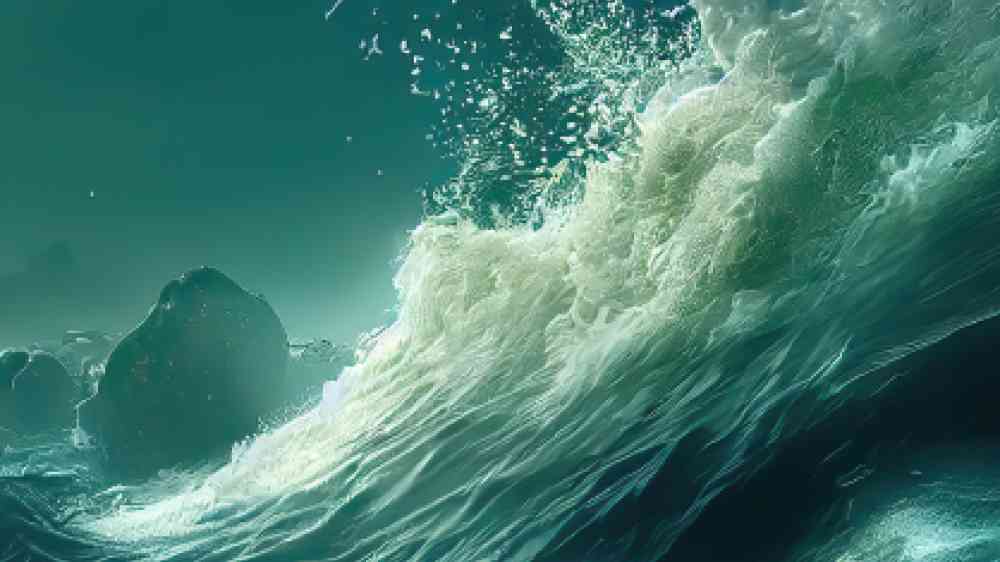
Earthquakes and landslides in the Ionian Sea could trigger tsunami waves as high as 2.5 meters (8 feet) on the southern coast of Italy, according to tsunami models presented at the December 2022 American Geophysical Union Fall Meeting in Chicago and published in a recent report from the Italian Ministry of Ecological Transition. The study focused on the coastal city of Crotone, in the Calabria region of Italy, also known as the "toe" of the boot-shaped peninsula.
Why worry?
Italy is no stranger to earthquakes or tsunamis. Records dating back to the Roman era reveal devastating tsunamis that submerged coastal communities. One such tsunami occurred in 2002 when eruptions of the volcano Stromboli caused landslides that displaced enough water in the Tyrrhenian Sea to produce two tsunamis, with wave heights up to 10 meters (33 feet) on the island. Volcanic activity, offshore earthquakes and landslides have been responsible for tsunamis in Italy every few decades in the 20th century.
Motivated by increased gas extraction in the Adriatic, Ionian and Mediterranean seas by Italy and other Mediterranean nations, the Italian Ministry of Ecological Transition funded a study to explore the potential impacts of tsunami-generating earthquakes and landslides. The idea is that increased drilling and extraction in the tectonically active region could trigger earthquakes on pre-existing faults, which could generate tsunamis and also trigger tsunami-generating underwater landslides.
Modeling different scenarios
In the first stage of a three-phase research project, researchers estimated the potential for earthquakes on offshore faults. "The earthquake scenarios are based on local structures that have been studied and identified," explains Filippo Zaniboni and Alberto Armigliato, geophysicists at the University of Bologna in Italy who co-authored the tsunami study. The researchers also mapped unstable underwater slopes that could collapse in a landslide. Both earthquake and landslide hazards have the potential to move large volumes of water, causing a tsunami. This investigation involved the whole Italian coast, providing a first larger scale assessment of the background tsunami hazard connected to natural causes (see Antoncecchi et al., 2020).
In the second phase of the project, the study focused on a specific site - the coastal stretch around Crotone. Zaniboni and his co-authors simulated tsunami scenarios to find out just how much inundation the coast could experience. They modeled tsunami waves triggered by a variety of possible underwater earthquake and landslide scenarios.
While earthquakes are a common trigger for landslides, many other mechanisms can contribute to underwater slope failures, Zaniboni says. For unstable slopes under the sea, water intrusion and sea level changes, underwater currents, and the presence of gas can all contribute to the instability of slopes, which can lead to landslides.
The researchers considered three possible landslide scenarios. Two of the scenarios involve larger displaced volumes (about 0.4-0.5 cubic kilometers, or 14-15 billion cubic feet) and occur farther offshore, at underwater depths from 750-1,250 meters (2,500 to 4,100 feet). The third scenario was a smaller landslide scenario (about 0.2 cubic kilometers or 7 billion cubic feet) located closer to shore (at depths from about 400-700 meters, or 1,300 to 1,700 feet).
In their modeling, the largest wave was produced by the smaller landslide. Whereas the two larger landslides are "slump-like" scenarios in which the land mass would move all at once as a single unit and then stop, the smaller landslide was expected to behave as a debris flow, a type of landslide that typically maintains higher speeds over a longer time. The smaller landslide also exhibited more complex dynamics because it would travel along an underwater canyon that would make it speed up and slow down several times.
Earthquake scenarios ranged from magnitude 6.0 to 6.9 and could produce waves as high as 2 meters (6.6 feet). Landslides, which could be triggered by earthquakes or by other processes, could result in even larger tsunami waves, as high as 2.5 meters (8 feet). While none of the simulated tsunamis would be catastrophic, Zaniboni points out that local features like harbor basins and river mouths can enhance tsunami waves and cause greater inundation. A more detailed study of the most affected coastal areas could provide better estimates of how a tsunami would impact Crotone and its harbor, he notes.
Evaluating tsunami hazards
"It's a solid set of models; they work well" says Elena Suleimani, a tsunami modeler at the Alaska Earthquake Center at University of Fairbanks, Alaska. But Suleimani says she's not aware of any tsunamis triggered by extraction. For example, decades of offshore drilling in the offshore Alaska region have not caused tsunamis.
Offshore gas storage was blamed for hundreds of small earthquakes in Spain in 2013, and the Netherlands has experienced many small earthquakes after decades of natural gas drilling. In the midwestern U.S., there has been a significant rise in induced earthquakes from wastewater injection associated with hydrofracturing or "fracking" for natural gas - a special process for extracting gas from tight reservoirs.
Although the Ionian Sea tsunami research was motivated by concerns about offshore drilling, the earthquake and landslide scenarios are based on existing faults and underwater slopes. These natural conditions could cause tsunamis regardless of gas extraction in the region, according to Zaniboni. These tsunami scenarios will now be passed on to regional city planners and engineers who can assess the tsunami threat. The third phase of the project will involve the consideration of ways to protect coastal communities.